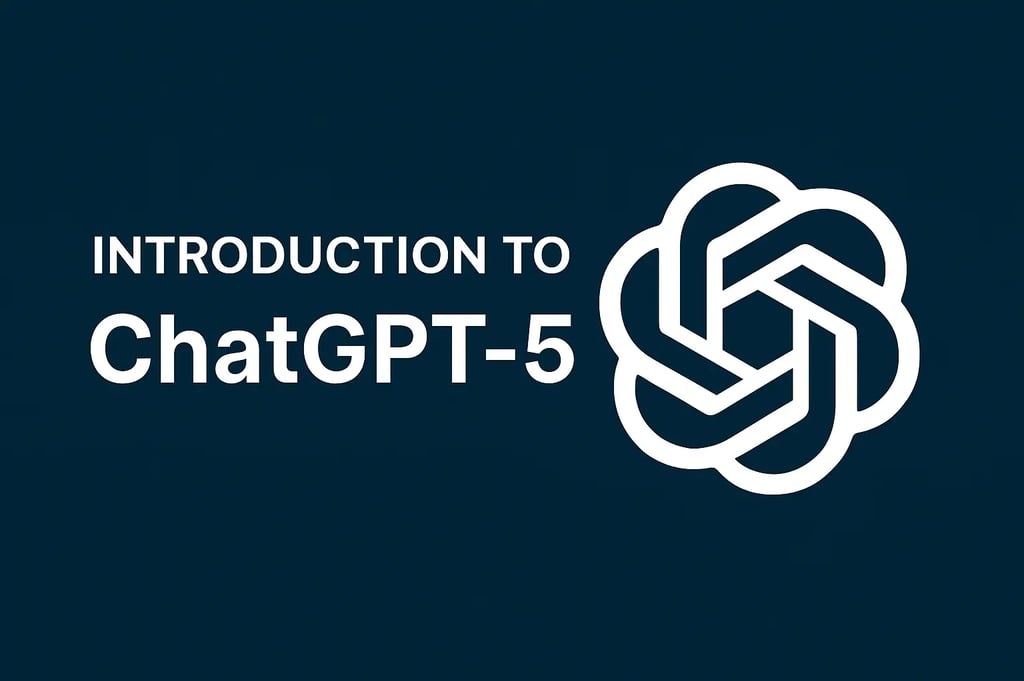ChatGPT-5: Features, Benefits, Applications & Future of AI (2025 Guide)
Discover everything about ChatGPT-5 – its features, advanced capabilities, practical applications, and the future of AI. Learn how OpenAI’s latest model is revolutionizing communication, content creation, and customer service.


Introduction to ChatGPT-5 – OpenAI’s Next-Gen AI Model
ChatGPT-5 is the latest breakthrough in artificial intelligence by OpenAI, marking a huge leap in natural language processing (NLP) technology. Building upon the strengths of ChatGPT-4, this advanced AI model delivers more accurate, context-aware, and human-like conversations.
Thanks to enhanced AI training methods, larger and more diverse datasets, and refined algorithms, ChatGPT-5 can understand subtle nuances in human communication better than ever before. This makes it more versatile, adaptive, and reliable across a wide range of topics – from casual chats to complex professional queries.
Unlike its predecessors, ChatGPT-5 not only engages users but actively assists in content creation, problem-solving, and information retrieval. With improved contextual memory and reduced bias, it offers ethical, personalized, and efficient AI interactions for individuals, businesses, and educators alike.
Key Features of ChatGPT-5
Advanced Conversational Flow –
ChatGPT-5 delivers smoother, more natural conversations, responding with human-like fluency and maintaining a consistent tone.Better Contextual Understanding –
The AI remembers past interactions in the conversation, allowing for more coherent and relevant responses.Personalized Interaction Modes –
Users can choose between concise, direct answers or detailed, exploratory discussions, ensuring the AI adapts to communication preferences.Reduced Bias & Ethical Alignment –
OpenAI has worked to minimize harmful biases, making ChatGPT-5 safer and more responsible in AI-driven interactions.Dynamic Fine-Tuning –
Real-time adaptation based on user feedback makes responses increasingly relevant and accurate.
Practical Applications of ChatGPT-5
1. Customer Support Automation
Businesses can integrate ChatGPT-5 into websites and apps to handle instant customer queries, guide users through purchases or returns, and reduce operational costs.
2. Content Creation & Marketing
Marketers and writers can use ChatGPT-5 to generate blog posts, social media captions, product descriptions, and creative ad copy in minutes.
3. Education & E-Learning
Teachers and e-learning platforms can use ChatGPT-5 to answer student questions, explain difficult concepts, and create custom quizzes for personalized learning.
4. Personal AI Assistant
Individuals can rely on ChatGPT-5 for task management, scheduling, reminders, and quick information retrieval, boosting productivity.
The Future of AI with ChatGPT-5 and Beyond
ChatGPT-5 is not just another AI update – it’s a cornerstone for the future of artificial intelligence. With continuous advancements, we can expect future models to include multimodal capabilities (combining text, voice, and images) for even richer user experiences.
However, with great power comes responsibility. The development of AI models like ChatGPT-5 brings ethical concerns about misinformation, bias, and data privacy. This makes responsible AI governance crucial for the safe evolution of technology.
As AI continues to evolve, ChatGPT-5 is paving the way for more intelligent, context-aware, and ethical AI solutions that can transform industries, improve learning, and enhance daily life.
Conclusion
With its advanced NLP, improved memory, and adaptive learning capabilities, ChatGPT-5 stands as one of the most powerful AI tools in 2025. Whether for business, education, or personal use, its versatility and reliability make it a game-changer in the world of artificial intelligence.
